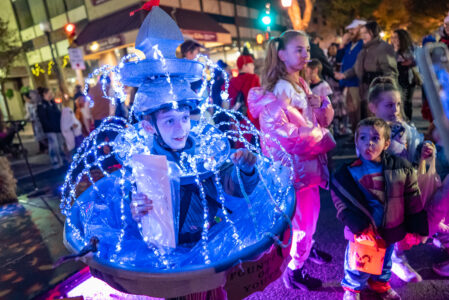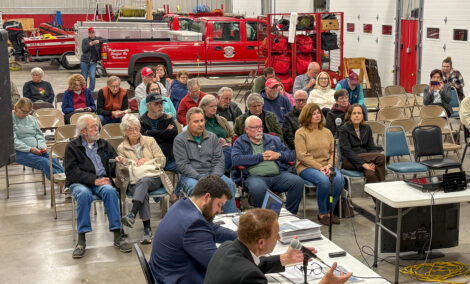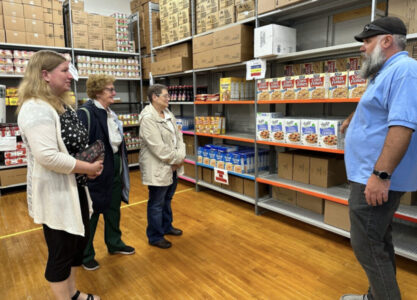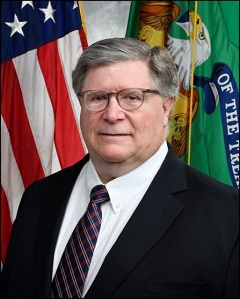CCC camps helped families overcome economic hardships stemming from the Great Depression

PHOTO PROVIDED Barracks photo of the boys of Camp Morton, including a young Charles Libby who is front row fifth from left and the one not wearing a tie, at Camp Morton in Benton in the late 1930's.
(EDITOR’S NOTE: Today the Sun-Gazette offers the next installment in a weekly history series that tells the stories of those who came before us.)
After the stock market crash in 1929, the Great Depression left many hungry and without work. That atmosphere prompted President Franklin D. Roosevelt to find a way to help young, able-bodied men put food on the table for their families.
In 1933, Roosevelt founded the Emergency Conservation Work, which later was renamed to the Civilian Conservation Corps, or CCC. Through it, unmarried, unemployed men ages 18 to 25 did manual labor for payment, including carving out roads, building bridges, planting trees and other sustainable work.
“He (Roosevelt) proposed to recruit thousands of unemployed young men, enroll them in a peacetime army and send them into battle against destruction and erosion of our natural resources,” according to the CCC Legacy’s website. “Before the CCC ended, over 3 million young men engaged in a massive salvage operation described as the most popular experiment of the New Deal.”
According to the state Department of Conservation and Natural Resources’ website, many young men came to the camps hungry and poorly clothed.
They were issued uniforms and given three meals a day, and many of them gained about 40 pounds while in the camps, according to DCNR. The men earned $30 a month, most of which was sent home to their families.
Charles Libby, of Loyalsock Township, was a CCC participant at Camp Morton in Benton. He said he sent $25 back home to his family each month.
“Most of the money went home to your people,” Libby said. “I got $5 a month to spend at the canteen, where we could go buy candy and stuff. The rest went home to my mother.”
In Lycoming County, camps were located in Slate Run, Cammal, Elimsport, Waterville, Bodines, Montoursville and other areas.
“The U.S. Army ran the camps, but foresters, carpenters and other people directed the work. The CCC fought forest fires; planted trees; built roads, buildings, picnic areas, swimming areas, campgrounds; and created many state parks,” according to DCNR.
The state of Pennsylvania had the second highest number of camps in the program at 151. California had the most, according to DCNR.
Nationwide, 194,500 Pennsylvania citizens served in the CCC camps.
Much of the state’s success in the program was due to Gov. Gifford Pinchot, according to explorepahistory.com.
“Pinchot, who had served as chief forester of the U.S. Division of Forestry under Theodore Roosevelt, had already developed a network of labor camps to employ workers in road building and conservation work,” according to the website. “Pinchot’s program led to the construction of 20,000 miles of paved roads, mostly in rural, agricultural areas, and his worker camps set a template for the CCC camps that followed.”
John Eastlake, CCC Legacy organization volunteer, said he became interested in the CCC story after witnessing it every day as he worked as a forester from Tiadaghton State Forest. He now is retired.
“I got involved with researching the program because I saw what they did everyday while working,” he said. “I saw the roads they built, the trees they planted and the parks they developed.”
Eastlake said the program started to help get the country out of the Great Depression.
“It was one of many work projects, but the CCC was really one that did a lot for the country,” he said.
Because they did road construction and forestry work before modern equipment was developed, most of their activities were done by hand.
“There was a lot of physical work involved. With sledgehammers, they would break rocks to do road service. The guys put on muscle and weight, developed into pretty lean and mean guys,” he said. “They worked together … They got along well. They did follow orders, and they were well disciplined.”
The CCC camps continued until 1942. Following the Japanese attack on Pearl Harbor in late 1941, the U.S. government began directing more attention toward the effort of World War II.
“The guys that worked in the camps went into World War II and won the war for us,” Eastlake said. “Hitler had the youth core and they were trained for war. Maybe FDR had the same thing, except they weren’t training for war … There was no marching, things like that … but these guys went on to World War II, guys like Charles Libby and many others.”
Libby, who is now 100 years old, said he joined the camps so he could provide for his family. He lied about his age so he could start work at 16, and he said many others did the same.
“Most of them were teenagers,” Libby said. “I wanted to help my family.”
He said he knew a friend who was in the camp, and that’s what made him sign up.
“Families were allowed to come on Sundays. People would come to see their sons who lived not too far away,” he said. “They weren’t allowed during the week because we had work to do.”
One thing Libby remembers from his camp was that they rescued two baby bears who were trapped in a stump after their mother had been killed. The bears became sort of a mascot for his camp.
“We took them out, and we raised them for the couple years I was in there,” he said. “When that bugle blew, they knew we were all going down to the mess hall. Them bears, they would come down and sit right there, waiting for someone to bring something out … They knew every time.”
He said the bears got bigger and ran around until they got too big for camp.
“We were so used to them, these bears running around,” he said. “When the game wardens came to get them, there was near a fight. We didn’t want them to take the bears.”
Libby, who went on to be a World War II U.S. Army sergeant who served in the 628th Tank Destroyer Battalion attached to Gen. George S. Patton after his time at Camp Morton, said he felt his time with the camp helped train him for the army, especially with all the physical labor.
Steve Hunter, author of “From The Command Car,” a book about Libby’s life, said he personally went with Libby out to Camp Morton to see the area. One thing they got to see together was the remains of the swimming hole.
“The boys learned how to put the roads in Pennsylvania, blowing tree stumps out, moving boulders and rocks and so forth,” he said. “At the end of the day when they were done doing the work they were paid for, they came back and employed the same skills to use to do that (the pool) for their own comfort at night. They dammed up an area, dug out with their tools … it took weeks to fill, settle down and they even built a platform. All those skills were taught by the engineers of the camp.”
He said most of the camp has since been overrun by nature and time, but many of the trees planted by the CCC boys are still there.
“For everything they destroyed, because of the roads, they were also obligated to replant,” Hunter said.
“They had handfuls of saplings they planted, and we walked down the roads … now, three people could barely get their arms around these big trees.”






